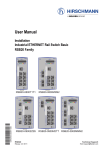Download IlllllllllllllIllIlllllllllIlllllllllllllllllllllllllllllIlllllllllllllllll
Transcript
IlllllllllllllIllIlllllllllIlllllllllllllllllllllllllllllIlllllllllllllllll US005321829A United States Patent [191 Zifferer MONITORING LADDER LOGIC PROGRAMS [21] Appl. No.: 556,958 Jul. 20, 1990 [51] [52] Int. Cl.5 .............................................. .. G06F 9/00 US. Cl. .................................. .. 395/575; 395/159; [58] Field of Search ...... .. 395/575, 600, 650, 191-192, [56] 395/147, 159; 364/147, 188; 371/29.l References Cited 371/291; 364/147; 364/DIG. 1; 364/2751 U.S. PATENT DOCUMENTS 8/1972 5/ 1974 5/ 1975 6/1976 7/1977 Fletcher et al. . Struger et al. . Johnstone . Wanauchi et a1. . Dummermuth et al. . 4,200,914 4/ 1980 Kintner . 5,321,829 Jun. 14, 1994 cessor. [75] Inventor: Scott C. Zifferer, Mequon, Wis. [73] Assignee: ICOM, Inc., West Allis, Wis. 3,686,639 3,813,649 3,882,305 3,964,026 4,038,533 Patent Number: Date of Patent: erations Manual”, Bulletin 1772, Mini PLC-2/05 Pro [54] GRAPHICAL INTERFACES FOR [22] Filed: [11] [45] Icom, Inc., “PLC~2 Ladder Logistics User’s Manual”, Aug. 1987. Icom, Inc., “PLC-5 Ladder Logistics User's Manual”, Sep. 1987. Taylor Industrial Software, “Product Bulletin #24”, Apr. 1987. Icom, Inc., “PLC-3 Ladder Logistics User’s Manual”, Sep. 1987. Taylor Industrial Software, "Product Summary”, Feb. 1988. Taylor Industrial Software, “Product Bulletin #21”, Apr. 1987. PLC-5 Ladder Logistics User’s Manual, Sep. 1987, Icom, Inc. MMI Logistics User’s Manual, May 1990, loom, Inc. Primary Examiner-Paul V. Kulik Assistant Examiner-Jennifer M. Orzech Attorney, Agent, or Firm-Merchant, Gould, Smith, - 4,227,247 10/1980 Kintner . 4,244,034 l/198l Cherba . 4,247,901 1/1981 Martin et al. . 4,316,260 2/1982 Hideshima , 4,396,974 8/ 1983 Imazeki et al. . 4,415,965 11/1983 Imazeki . 4,445,169 4/1984 Wakiti et a1. . 4,449,180 5/1984 Ohshima et al. . Edell, Welter & Schmidt [57] ABSTRACT 4,486,830 12/1984 Taylor, Jr. et a1. . 4,488,258 12/1984 Struger et al. . 4,513,379 4/1985 Wilson et al. . 4,533,997 8/1985 Furgerson . A menu-driven system for developing Man-Machine Interfaces (MMI) for use in the graphical monitoring of ladder logic programs executing in programmable logic controllers PLCs. The Man-Machine Interfaces graphi cally depict plant processes controlled by the PLC. Data from the PLC representing plant process events (flows, state changes, tank levels, etc.) are communi cated to the Man-Machine Interfaces. A Development 4,635,183 4,644,478 l/1987 Isobe et al. . 2/1987 Stephens et al. . structing the Man-Machine Interfaces. Ladder logic 4,661,899 4/1987 programs and databases associated therewith are im Usuda . 4,663,704 5/1987 Jones et a1. . 4,703,414 10/1987 Inoue et al. . 4,718,025 l/ 1988 Minor et al. . 4,815,014 3/1989 Lipner et al. . 4,833,592 4,843,538 4,991,076 5/1989 Yamanaka . 6/1989 Lane et a1. . 2/ 1991 Zift'erer et a1. .................... .. 364/147 5,127,099 6/1992 Zifferer et a1. .................... .. 395/725 System provides a programmer’s “tool box” for con ported and accessed by the Development System for use in the development of the Man-Machine Interfaces. A Runtime System provides an execution environment for the Man-Machine Interfaces. The Runtime System has the ability to access ladder logic programs during monitoring operations. A user can “hot-key” to the ladder logic program for trouble-shooting purposes. OTHER PUBLICATIONS Allen-Bradley Company, Inc., “Programming and Op 12 Claims, 9 Drawing Sheets US. Patent June 14,1994 Sheet 1. of 9 10 5,321,829 12 \ LASSE’RFLESGIC PROGRAM - ‘ LADDER DEVELOP LOGIC PROGRAM 14 \ GRAPHICS 16\ TEST MONITORING _ 28 SYSTEM 18 ms 20 NO / CHECK GRAPHICS 74 LADDER LOGIC PROGRAMS DO —> NOT MATCH \ NO FIX CRAPHics FIG. 1 US. Patent June 14, 1994 Sheet 2 of 9 DEFINE MMI PROJECT I DEFINE PLCS AND LADDER LOGIC PROGRAMS I DEFINE ANIMATION TYPE I DRAW OBJECT I TIE ELEMENT TO OBJECT I SEI' POLLING INTERVAL I SET ANIMATION 'IYPE PARAMETERS I SAVE MMI PROJECT FIG. 2 5,321,829 US. Patent June 14, 1994 ' 5,321,829 Sheet 3 of 9 3a \ TIE ELEMENT TO OBJECT 42 5O \ \ ELEMENT NAME OR ADDRESS DISPLAY SYMBOL DISPLAY LADDER LOGIC UST PROGRAM 44\ x SEARCH SYMBOL UST 46\ l SELECT 52\ 1 SEARCH LADDER LOGIC PROGRAM 54\ 1 POINT AND CUCK ON 48\ 1 STORE —--———-——> THE ELEMENT FIG. 3 _——————‘ US. Patent June 14, 1994 Sheet 4 of 9 58‘ 6O 62 64 / l l l PLO ELEMENT ADDRESS POLUNG INTERVAL ANIMATION ACTIONS 5,321,829 56 GRAPHICAL OBJECT FIG. 4 US. Patent June 14, 1994 LOAD MMI PROJECT FORMAT INITIAL SCREEN INITIALIZE POLLING INTERVALS 72 EVENT OCCURRED 74 78 POLL RESPONSE 82 FIG. 5 Sheet 5 of 9 5,321,829 US. Patent June 14, 1994 l l l T SEND QUERY Sheet 6 of 9 /86 TO PLC RESET POLLING INTERVAL RETURN FIG. 6 /86 5,321,829 U.S. Patent ' June 14, 1994 Sheet 7. of 9 i 92\ FIND OBJECT ASSOCIATED WITH ELEMENT 94 / REDRAW BAR IF ALTERED 1 00 ] REDRAW NUNERIC --> \F ALTERED 104 102 a - / REDRAW TREND LINE —> IF ALTERED 10a / 10s - DRAW/REDRAW STATE CHANGE -—> OBJECT 110 RETURN _ FIG. 7 US. Patent June 14, 1994 Sheet 8 of 9 % CHECK / 1 12 SECURITY i DISPLAY LADDER 1 / 1‘ LOGIC i SEARCH LADDER / 1'15 LOGIC RE-DISPLAY / “8 um i RETURN FIG. 8 /12o 5,321,829 US. Patent Sheet 9 of 9 June 14, 1994 I'HOT KEY " STRUCTURE‘ 1/22 1 24 1 26 l'GOTO FIG. 9 1 28 5,321,829 1 5,321,829 2 accessed by the Development System for use in the development of the Man-Machine Interfaces. A Runtime System in the preferred embodiment pro GRAPHICAL INTERFACES FOR MONITORING LADDER LOGIC PROGRAMS vides an execution environment for the Man-Machine 5 Interfaces. The Runtime System has the ability to access BACKGROUND OF THE INVENTION ladder logic programs during monitoring operations. A 1. Field of the Invention user can “hot-key” to the ladder logic program for This invention relates in general to monitoring sys tems for programmable logic controllers (PLCs), and in trouble-shooting purposes. particular, to a system for developing Man-Machine Interfaces to graphical monitor ladder logic programs executing in PLCs. 2. Description of Related Art PLCs perform many of the control functions for BRIEF DESCRIPTION OF THE DRAWINGS Referring now to the drawings in which like refer ence numbers represent like elements throughout the several views: assembly line machines, machine tools, and other types of industrial equipment. For example, a part arriving at FIG. 1 is a ?owchart illustrating a typical develop ment and test cycle in the preferred embodiment; FIG. 2 is ?owchart illustrating the steps performed by the Development System in constructing a Man Machine Interface; FIG. 3 describes three methods used by the Develop ment System to tie elements to graphical objects; FIG. 4 describes a data structure for storing graphical a workstation may contact and close a limit switch or other type of sensing device. As a result, an electrical circuit is completed or broken, and a signal is sent to a PLC indicating the change in condition. The PLC re sponds to the input as directed by a ladder logic pro gram which, to a large degree, simulates the response of what used to be accomplished by older systems with a set of relays and other control devices. Ladder logic objects, PLC addresses, element addresses, polling in tervals, and action identi?ers; programs instruct the PLC how and when to react to FIG. 5 is a ?owchart illustrating the steps performed by the Runtime System in executing an MMI Project; FIG. 6 is a flowchart illustrating the steps performed by the Runtime System when a polling interval is trig the different signals it receives. The PLC, in turn, in structs the devices it controls in an appropriate manner as speci?ed in the ladder logic program. In the prior art, operators can communicate with PLCs from personal computers or other control devices to monitor the status of ladder logic programs, trouble shoot ladder logic programs, force the status of I/O gered; FIG. 7 is a ?owchart illustrating the steps performed by the Runtime System when a response to a poll is received from the PLC; FIG. 8 is a ?owchart illustrating the steps performed by the Runtime System when user input is received, either from a keyboard or other input device; and FIG. 9 describes the format of a “hot-key” data struc status bits ON or OFF to simulate events, and perform a number of other functions. However, prior art sys tems offer little else in the way of monitoring aids. For example, in the prior art, an engineer must manu ally build a monitoring system separately from the de velopment of the ladder logic program. Thus, the engi ture. neer constructs a database for the monitoring system, including PLC stations, element addresses, possibly including textual descriptions and other information 40 such as scaling factors and mathematical functions to be performed. Further, keeping these separate entities (i.e., the monitoring systems, the databases, and the ladder logic programs) synchronized can be a logistical night mare. DETAILED DESCRIPTION OF THE PREFERRED EMBODIMENT In the following description of the preferred embodi ment, reference is made to the accompanying drawings which form a part hereof, and in which is shown by way of illustration a speci?c embodiment in which the 45 invention may be practiced. It is to be understood that Furthermore, in the prior art, an engineer does not have access during monitoring to the ladder logic pro gram. Thus, the engineer typically must exit the moni other embodiments may be utilized and structural changes may be made without departing from the scope of the present invention. toring system and separately access the ladder logic The preferred embodiment provides PC-based menu program, or use a separate computer for accessing the 50 driven software for developing Man-Machine Inter ladder logic program. SUMMARY OF THE INVENTION faces (MMI) to graphically monitor ladder logic pro grams executing in PLCs. The Man-Machine Interfaces graphically depict plant processes controlled by one or To overcome the limitations in the prior art described more PLCs. Data from the PLCs, representing plant above, and to overcome other limitations that will be 55 process events (?ows, state changes, tank levels, etc.), come apparent upon reading and understanding this are communicated to the Man-Machine Interfaces for speci?cation, the present invention discloses a menu driven system for developing Man-Machine Interfaces (MMI) to graphically monitor ladder logic programs executing in PLCs. The Man-Machine Interfaces graph ically depict plant processes controlled by the PLC. Data from the PLC representing plant process events (?ows, state changes, tank levels, etc.) are communi cated to the Man-Machine Interfaces for display. A Development System in the preferred embodiment provides a programmer’s “tool box” for constructing the Man-Machine Interfaces. Ladder logic programs and databases associated therewith are imported and display. 60 The preferred embodiment operates in a hardware environment of the type described in FIGS. 13-16, and the description thereof, found in the co-pending and commonly assigned patent application Ser. No. 07/373,826 filed Jun. 30, 1989 now US. Pat. No. 4,991,076, by Scott C. Zifferer et al., entitled 65 “METHOD AND APPARATUS FOR CREATING CUSTOM DISPLAYS FOR MONITORING LAD DER LOGIC PROGRAMS”, which application is incorporated herein by reference. 3 5,321,829 4 it, and pressing the ENTER key (46). This sequence of FIG. 1 is a ?owchart illustrating a typical develop ment and test cycle in the preferred embodiment. The steps eliminates most common typographical errors. user develops a ladder logic program on a personal This operation is further described in the co-pending computer (10) and stores it in a disk ?le (12). and commonly assigned patent application Ser. No. Typically, computer-based development systems are used to develop the ladder logic program. One example of a computer-based ladder logic development system is 07/374,487 ?led Jun. 30, 1989, now pending, by Scott C. Zifferer et al., entitled “METHOD AND APPA described in the “PLC-5 LADDER LOGISTICS TM RATUS FOR SYMBOLIC LADDER LOGIC PRO GRAMMING WITH AUTOMATIC ATTACH User’s Manua ”, ICOM, Inc., which manual is incorpo MENT OF ADDRESSES”, which application is in 10 corporated herein by reference. rated herein by reference. The user draws graphical objects representing the The third method is to press an input key designated plant processes to be monitored (14), and “ties” or asso as the LADDER LOGIC key to display the ladder ciates the graphical objects to elements in the ladder logic program on the computer screen (50). The user logic program (12). The user tests the monitoring sys can search through the ladder logic program for the tem (16), and if errors are found (18), the graphical desired element using any of the functions described in objects are reviewed for correctness (20). If no errors are found in the graphical objects (22), then the user checks that the ladder logic program is correct (24). the co-pending and commonly assigned patent applica tion Ser. No. 07/375,059 ?led Jun. 30, 1989 now aban doned, by Scott C. Zifferer et al., entitled “METHOD Otherwise, the graphical objects are corrected if they AND APPARATUS FOR CROSS-REFERENCE are in error (26). Usually these steps are suf?cient to 20 SEARCHING IN LADDER LOGIC PROGRAMS”, resolve any errors. Once the errors are resolved, the user can begin monitoring the PLCs (28). Thus, there are only a few steps in the development and debugging cycles of the preferred embodiment. which application is incorporated herein by reference (52). The user also can search through the ladder logic program for the desired element using mouse input device as described in the “MMI Logistics TM —User’s Naturally, time savings turn into money savings for the 25 Manual”, ICOM, Inc., which manual is incorporated user. herein by reference (52). Once the desired element is In addition to the description herein, more speci?c found, the user ties the object to the element via a information on the Development System can be found “Point and Click” operation using a mouse input device in the “MMI Logistics TM —User’s Manual”, ICOM, (54). Inc., which manual is incorporated herein by reference. 30 In the “Point and Click” operation, the Development System recognizes which instruction and element of the MMI Project ladder logic program are currently displayed under the An important concept of the preferred embodiment is cursor of the mouse input device. The element address an “MMI Project”. An MMI Project is the name given is thus read from the ladder logic program. Because the 35 to an overall application. Although the MMI Project “Point and Click” operation requires no keyboard input consists of many inherently unique entities, e. g., graphi it eliminates most common typographical errors. cal objects, ladder logic programs, etc., all of these After the desired element has been selected by one of become integral parts of an application. The MMI the three methods, it is stored in a data structure asso Project serves as a superintendent for the application, allowing the user to de?ne all the parts thereof and tie ciating them with graphical objects (48). FIG. 4 describes a data structure for associating an element with a graphical object. The data structure Development System stores a copy of the graphical object (56), a station address for the PLC being monitored (58), an address FIG. 2 is ?owchart illustrating the steps performed for the element in the PLC (60), a polling interval (62), 45 by the Development System in constructing a Man and identi?ers that describe what animation actions Machine Interface. The MMI Project is de?ned (30), occur when the element value changes (64). Each MMI along with its associated PLCs (i.e., station addresses on Project may have multiple screens for display on the a network), ladder logic programs, and associated data computer. Each screen may have multiple objects bases (32). The animation type is de?ned (34) and the corresponding graphical object is drawn (36). The 50 thereon for display on the computer, each accessing different elements in the same or different PLCs. graphical object is tied to an element of a ladder logic them together in a meaningful way for particular needs. program (38). A polling interval is speci?ed which Runtime System indicates how often the element value is retrieved from FIG. 5 is a ?owchart illustrating the steps performed the PLC (40). Also speci?ed are speci?c “action” pa rameters for the graphical object that indicate how the 55 by the Runtime System in executing an MMI Project. The Runtime System provides an execution environ object changes in response to changes in the element ment for the MMI Project. The Runtime System itself is value (42). Finally, the MMI Project may be saved for executed by a computer which communicates with one later retrieval (44). or more PLCs. FIG. 3 describes three methods used by the Develop ment System to tie elements of ladder logic programs to 60 The MMI Project is loaded (66) and the initial screen graphical objects (38). The ?rst method is the typing in of the PLC address associated with the element at an of graphical objects is displayed (68). The Runtime System initializes polling intervals for each object con tained in the MMI Project (70). A loop is entered, entry ?eld displayed on the computer screen (40). whereby the Runtime System waits for an event to The second method is to press an input key desig nated as the SYMBOL key, thereby displaying a list of 65 occur (72). The Runtime System may handle a number of different events: the triggering of a polling interval all symbols in the ladder logic program (42). The list (74-76); a response from the PLC (78-80); or the entry may be searched for the desired element (44), and the of commands by the operator from the computer desired element selected by positioning the cursor over 5 5,321,829 6 (82-84). As indicated in FIG. 5, details regarding each ladder logic system (112). This security system is an of these events are illustrated in FIG. 6, 7, and 8. extension of the one described in the co-pending and Polling Interval FIG. 6 is a ?owchart illustrating the steps performed by the Runtime System when a polling interval is trig gered. A query message requesting a particular element value is generated by the Runtime System for transmis sion to the PLC (86). The Runtime System then resets the polling interval (88), and control returns to FIG. 5 (90). Poll Response FIG. 7 is a ?owchart illustrating the steps performed by the Runtime System when a response to a poll is received from the PLC. The input is a message gener ated by the PLC in response to a prior query by the Runtime System, or an unsolicited message generated by the PLC in response to an “Exception Scan”. The commonly assigned patent application Ser. No. 07/375,270 ?led Jun. 30, 1989 now US. Pat. No. 5,127,099, by Scott C. Zifferer et al., entitled “METHOD AND APPARATUS FOR SECURING ACCESS TO A LADDER LOGIC PROGRAM MING AND MONITORING SYSTEM”, which ap plication is incorporated herein by reference. Once the security check is passed, the Runtime Sys tem accesses the “hot-key” data structure of FIG. 9 and extracts the ?lename and rung number therefrom to access and display the ladder logic program on the computer screen in place of the Man-Machine Interface (114). During the display of the ladder logic program, the operator has access to a number of search functions (116), including those described in the co-pending and commonly assigned patent application Ser. No. 07/375 059 ?led Jun. 30 1989 now abandoned, by Scott C. input typically comprises an element identi?er and the 20 Zifferer et al., entitled “METHOD AND APPARA current value therefor in the PLC. The Runtime System TUS FOR CROSS-REFERENCE SEARCHING IN searches the data structures described in FIG. 4 to LADDER LOGIC PROGRAMS”, which application match the element to an object (92). In the next series of is incorporated herein by reference. steps of FIG. 7, the Runtime System processes the input Once the operator has completed the search of the according to the type of object associated with the 25 ladder logic program, the Runtime System re-displays element: Bargraph objects (94-96); Numeric objects the Man-Machine Interface and continues monitoring (98-100); Trend objects (102-104); and State Change objects (106-108). As indicated in FIG. 7, each graphi the PLCs (118). Control then returns to FIG. 5 (120). cal object is redrawn if the element value causes it to be Summary altered. Note that the State Change object may be drawn for the ?rst time. After the input has been pro In summary, a menu-driven system has been de scribed, which system is used for developing Man Machine Interfaces to graphical monitor ladder logic programs executing in PLCs. Man-Machine Interfaces Keyboard Event FIG. 8 is a ?owchart illustrating the steps performed 35 graphically depict plant processes controlled by the PLC. Data from one or more PLCs representing plant by the Runtime System when operator input is re process events (?ows, state changes, tank levels, etc.) ceived, either from a keyboard or other input device. are then communicated to the Man-Machine Interface Typically, such an input could indicate many things, for display. including an exit from the Runtime System. The Development System of the preferred embodi The Runtime System also has the ability to access cessed, control returns to FIG. 5 (110). ladder logic programs. The operator may “hot-key” to ladder logic programs for trouble-shooting, etc. Multi ment provides a programmer’s “tool box” for construct ing the Man-Machine Interfaces. Ladder logic pro grams are imported and accessed by the Development ple "hot-keys” can be assigned to different MMI System for use in the development of the Man-Machine Projects, different ladder logic programs within the MMI Project, and different rungs within the ladder 45 Interfaces. The Runtime System of the preferred embodiment logic program. provides the operational software that executes the FIG. 9 describes the format of a “hot-key” data struc Man-Machine Interfaces. The Runtime System has the ture. This structure is usually created at the same time ability to access ladder logic programs during monitor the MMI Project is constructed in the Development ing operations. An operator can “hot-key” to the ladder System. The ?rst ?eld 122 de?nes the keystrokes of the logic program for trouble-shooting purposes. “hot-key.” The second ?eld 124 contains an identi?er The foregoing description of the preferred embodi which indicates that upon accepting the input key, the ment of the invention has been presented for the pur Runtime System should display the ladder logic pro poses of illustration and description. It is not intended to gram. (Other actions, such as zooming the display of graphical objects, downloading element values to the 55 be exhaustive or to limit the invention to the precise form disclosed. Many modi?cations and variations are PLC, or exiting the Runtime System could be speci?ed possible in light of the above teaching. It is intended as well). The third ?eld 126 provides a ?lename where that the scope of the invention be limited not by this a copy of the associated ladder logic program is stored detailed description, but rather by the claims appended and a station address of the PLC executing the ladder hereto. ' logic program. The fourth ?eld 128 identi?es a speci?c What is claimed is: rung, if any, within the ladder logic program. Thus, the 1. A computer-based method of monitoring a ladder operator can display a speci?c portion of a speci?c logic program executing in a programmable logic con ladder logic program for troubleshooting purposes if troller, comprising the steps of: the Man-Machine Interface indicates a problem. FIG. 8 illustrates the steps performed by the Runtime 65 (a) drawing a graphical object on a monitor attached System when the operator inputs a “hot-key” request to a computer to depict a plant process controlled ing access to the ladder logic program. The ?rst step is by the programmable logic controller, wherein the to check security to prevent unauthorized access to the graphical object is selected from a group compris 5,321,829 7 8 (d) responding to the value being input from the pro grammable logic controller to the computer by ing Bargraph objects, Numeric objects, Trend ob jects, and State Change objects; (b) electronically associating the graphical object to changing the display of the graphical object in an element of the ladder logic_program; (c) setting a polling interval on the computer to indi 5 accordance with a change in the value of the asso (d) specifying action parameters on the computer to ciated element; and (e) responding to an entry of a hot-key command by an operator of the computer by accessing a “hot key” data structure in the computer and extracting therefrom an electronically stored ?lename which indicate changes in the display of the graphical identi?es a location on the computer where a copy cate how often a value for the associated element is to be retrieved from the ladder logic program exe cuting in the programmable logic controller; of the ladder logic program is stored, and display object that are to occur in response to changes in ing the copy of the ladder logic program on the the value of the associated element; (e) responding to a triggering of the polling interval by transmitting a query message from the computer to the programmable logic controller requesting a value for the associated element and by resetting the polling interval; and (f) responding to the value for the associated element monitor at a speci?c rung thereof. 6. The method of claim 5, further comprising the step of preventing unauthorized access to the copy of the ladder logic program. 7. A computer-based apparatus for monitoring a lad der logic program executing in a programmable logic controller, comprising: being input from the programmable logic control ler to the computer by changing the display of the 20 graphical object in accordance with a change in the value of the associated element. 2. The method of claim 1, wherein the electronically associating step comprises the step of accepting an ad controller, having a monitor attached thereto, the computer further comprising: (1) means for drawing a graphical object on the monitor to depict a plant process controlled by dress entered by an operator at an entry ?eld displayed 25 on the monitor, the address identifying a memory loca tion in the programmable logic controller associated the programmable logic controller, wherein the graphical object is selected from a group com prising Bargraph objects, Numeric objects, Trend objects, and State Change objects; (2) means for electronically associating the graphi with the element. 3. The method of claim 1, wherein the electronically associating step comprises the step of: (l) accepting a designated key entered by an operator (a) a computer, coupled to the programmable logic 30 cal object to an element of the ladder logic pro into the computer, and displaying a list of symbols gram; (3) means for setting a polling interval on the com used in the ladder logic program on the monitor in puter to indicate how often a value for the asso response thereto; (2) searching the list for a symbol representing a spe 35 ci?c element in the ladder logic program; and ciated element is to be retrieved from the ladder (3) electronically associating the graphical object to the speci?c element. _ 4. The inethod of claim 1, wherein the electronically associating step comprises the steps of: (l) accepting a designated key entered by the opera tor into the computer, and displaying the ladder controller requesting a value for the associated 45 element and by resetting the polling interval; and (6) means for responding to the value for the asso ciated element being input from the programma ble logic controller to the computer by changing the display of the graphical object in accordance 5. A method of monitoring a ladder logic program executing in a programmable logic controller, compris ing the steps of: (4) means for specifying action parameters on the computer to indicate changes in the display of the graphical object that are to occur in response to changes in the value of the associated element; (5) means for responding to a triggering of the polling interval by transmitting a query message from the computer to the programmable logic logic program on the monitor in response thereto; (2) searching through the ladder logic program for a speci?c element; and (3) electronically associating the graphical object to the speci?c element. logic program executing in the programmable logic controller; 50 with a change in the value of the associated ele ment. (a) displaying the graphical object on a monitor at tached to the computer to depict a plant process 8. The apparatus of claim 7, wherein the means for controlled by the programmable logic controller, the graphical object being electronically associated electronically associating comprises means for accept wherein the graphical object is one selected from a memory location in the programmable logic controller group comprising Bargraph objects, Numeric ob jects, Trend objects, and State Change objects; associated with the element. 9. The apparatus of claim 7, wherein the means for ing an address entered by an operator at an entry ?eld with an element of the ladder logic program, 55 displayed on the monitor, the address identifying a electronically associating comprises: (b) initializing a polling interval on the computer for the graphical object, the polling interval indicating 60 a waiting period before a value for the associated element is to be retrieved from the programmable logic controller; (0) responding to a triggering of the polling interval by transmitting a query message from the computer 65 to the programmable logic controller requesting a value for the associated element and by resetting the polling interval; ‘ (i) means for accepting a designated key entered by an operator into the computer, and displaying a list of symbols used in the ladder logic program on the monitor in response thereto; (ii) means for searching the list for a symbol repre senting a speci?c element in the ladder logic pro gram; and (iii) means for electronically associating the graphical object to the speci?c element. 9 5,321,829 10 interval indicating a waiting period before a value for the associated element is to be retrieved 10. The apparatus of claim 7, wherein the means for electronically associating comprises: from the programmable logic controller; (i) means for accepting a designated key entered by the operator into the computer, and displaying the (3) means for responding to a triggering of the polling interval by transmitting a query message ladder logic program on the monitor in response from the computer to the programmable logic thereto; (ii) means for searching through the ladder logic program for a speci?c element; and controller requesting a value for the associated (iii) means for electronically associating the graphical 10 object to the speci?c element. 11. An apparatus for monitoring a ladder logic pro element and by resetting the polling interval; (4) means for responding to the value being input from the programmable logic controller to the computer by changing the display of the graphi cal object in accordance with a change in the value for the associated element; and (5) means for responding to an entry of a hot-key command by an operator of the computer by accessing a “hot-key” data structure in the com puter and extracting therefrom an electronically gram executing in a programmable logic controller, comprising: (a) a computer, coupled to the programmable logic controller, having a monitor attached thereto, the computer further comprising: (1) means for displaying a graphical object on the monitor to depict a plant process controlled by stored ?lename which identi?es a location on the the programmable logic controller, the graphical computer where a copy of the ladder logic pro gram is stored, and displaying the copy of the ladder logic program on the monitor at a speci?c rung thereof. 12. The apparatus of claim 11, wherein the computer prising Bargraph objects, Numeric objects, further comprises means for preventing unauthorized Trend objects, and State Change objects; (2) means for initializing a polling interval on the 25 access to the copy of the ladder logic program. object being electronically associated with an 20 element of the ladder logic program, wherein the graphical object is selected from a group com i computer for the graphical object, the polling 30 35 45 55 65 I i i i















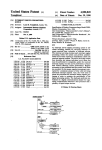

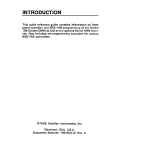


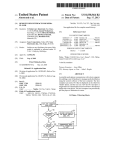
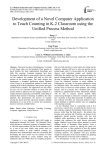

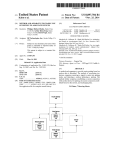


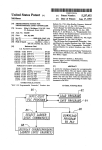

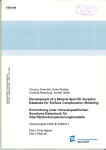




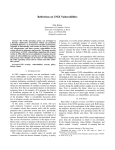
![*Sted Plus UG Jan 2012 [2].indd](http://vs1.manualzilla.com/store/data/005710511_1-f757ed41a0935df19f469c7cee361c5b-150x150.png)
